
The Cavendish Laboratory is the Department of Physics at the University of Cambridge, and is part of the School of Physical Sciences. The laboratory was opened in 1874 on the New Museums Site as a laboratory for experimental physics and is named after the British chemist and physicist Henry Cavendish. The laboratory has had a huge influence on research in the disciplines of physics and biology.

Alexei Alexeyevich Abrikosov was a Soviet, Russian and American theoretical physicist whose main contributions are in the field of condensed matter physics. He was the co-recipient of the 2003 Nobel Prize in Physics, with Vitaly Ginzburg and Anthony James Leggett, for theories about how matter can behave at extremely low temperatures.

Brian David Josephson is a British theoretical physicist and professor emeritus of physics at the University of Cambridge. Best known for his pioneering work on superconductivity and quantum tunnelling, he was awarded the Nobel Prize in Physics in 1973 for his prediction of the Josephson effect, made in 1962 when he was a 22-year-old PhD student at Cambridge University. Josephson is the first Welshman to have won a Nobel Prize in Physics. He shared the prize with physicists Leo Esaki and Ivar Giaever, who jointly received half the award for their own work on quantum tunnelling.

Samuel King Allison was an American physicist, most notable for his role in the Manhattan Project, for which he was awarded the Medal for Merit. A professor who studied X-rays, he was director of the Metallurgical Laboratory from 1943 until 1944, and later worked at the Los Alamos Laboratory — where he "rode herd" on the final stages of the project as part of the "Cowpuncher Committee", and read the countdown for the detonation of the Trinity nuclear test. After the war, he returned to the University of Chicago to direct the Institute for Nuclear Studies and was involved in the "scientists' movement", lobbying for civilian control of nuclear weapons.
Ekhard Karl Hermann Salje, FRS is an Emeritus Professor, and formerly Professor of Mineralogy and Petrology and Head of the Department of Earth Sciences, Cambridge University.
David Pines was a US physicist recognized for his work in quantum many-body systems in condensed matter and nuclear physics. With his advisor David Bohm, he contributed to the understanding of electron interactions in metals. Bohm and Pines introduced the plasmon, the quantum of electron density oscillations in metals. They also pioneered the use of the random phase approximation. His work with John Bardeen on electron-phonon interactions led to the development of the BCS theory of superconductivity. Pines also extended BCS theory to nuclear physics to explain stability of isotopes with even and odd numbers of nucleons. He also used the theory of superfluidity to explain the glitches in neutron stars.
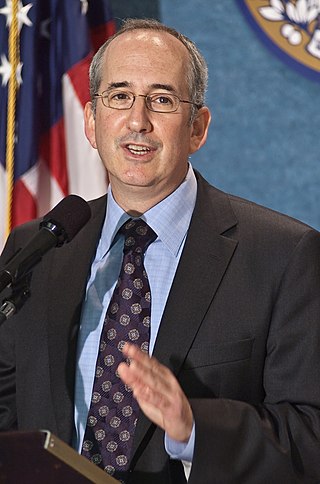
Eric Isaacs is an American physicist who is the 11th President of the Carnegie Institution for Science where he oversees the research and business functions across six research departments on the East and West coasts and observatories in Chile.
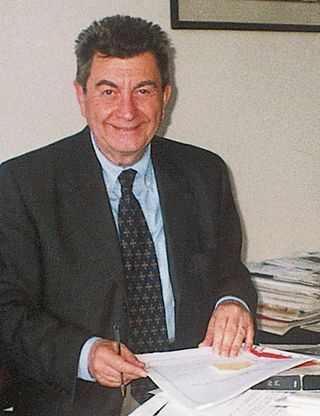
Giuseppe Franco Bassani was an Italian physicist.
Juan Carlos Campuzano is a Paraguayan American physicist. He is a Distinguished Professor of Physics at the University of Illinois at Chicago. He was a Distinguished Fellow at Argonne National Laboratory, and a he is also a 2001 American Physical Society Fellow and a recipient of the 2011 Oliver Buckley Prize in Condensed Matter Physics. He is an expert in high-temperature superconductivity.
Wick C. Haxton is an American theoretical nuclear physicist and astrophysicist. He is a professor of physics at the University of California, Berkeley and senior faculty scientist at Lawrence Berkeley National Laboratory. He was appointed a co-editor of the journal Annual Review of Nuclear and Particle Science as of 2023.
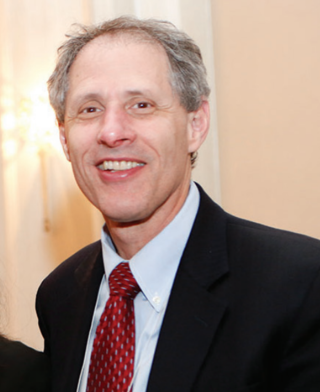
Thomas Felix Rosenbaum is an American condensed matter physicist, professor of physics, and the current president of the California Institute of Technology (Caltech). Previously, Rosenbaum served as a faculty member and Provost of the University of Chicago. He has also served as the vice president for research at Argonne National Laboratory.

John M. "Jack" Carpenter was an American nuclear engineer known as the originator of the technique for utilizing accelerator-induced intense pulses of neutrons for research and developing the first spallation slow neutron source based on a proton synchrotron, the Intense Pulsed Neutron Source (IPNS). He died on 10 March 2020.
James Arthur Krumhansl was an American physicist who specialized in condensed matter physics and materials science. He spent much of his career at Cornell University. He also served as president of the American Physical Society and assistant director for mathematics, physical sciences, and engineering for the National Science Foundation. In 1987 he testified before Congress that the Superconducting Super Collider would be too costly.
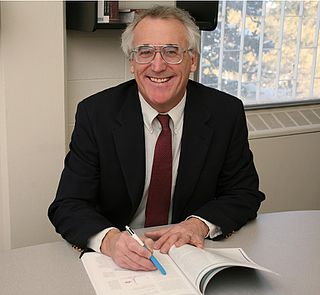
Alan Reginald Bishop is an internationally recognized British/American physicist and academic, specializing in condensed matter theory, statistical physics, and nonlinear physics. He retired as Principal Associate Director - Science, Technology, and Engineering at Los Alamos National Laboratory in 2018.
Michael Christopher Payne is a British theoretical physicist, working in the field of computational physics and theoretical condensed matter physics at the University of Cambridge.
David Kelly Campbell is an American theoretical physicist and academic leader. His research has spanned high energy physics, condensed matter physics and nonlinear dynamics. He also served as Physics Department Head at the University of Illinois at Urbana–Champaign, Dean of the College Engineering at Boston University, and Boston University Provost.
Deepak Mathur is an Indian molecular and atomic physicist and was a Distinguished Professor at the Tata Institute of Fundamental Research. He has been the J C Bose National Fellow at the Department of Atomic and Molecular Physics at Manipal Academy of Higher Education (MAHE) and founding director of the UM-DAE Centre for Excellence in Basic Science at the University of Mumbai. Known for his research on molecular and biological physics, Mathur is an elected fellow of the Indian Academy of Sciences, Indian National Science Academy and The World Academy of Sciences. The Council of Scientific and Industrial Research, the apex agency of the Government of India for scientific research, awarded him the Shanti Swarup Bhatnagar Prize for Science and Technology, one of the highest Indian science awards, for his contributions to physical sciences in 1991. Amongst other awards, he has been the Royal Society's Guest Fellow at Oxford University and winner of the European Union's Erasmus-Mundus prize in optical science which he held at Imperial College London. Currently he is an adjunct professor at MAHE and is also learning to fly. His initial training was on a Grob G-115 2-seater training aircraft but he has now moved on to flying PA-28 4-seater aircraft.

Pinaki Majumdar is an Indian condensed matter physicist and the director of the Harish-Chandra Research Institute. Known for his research on correlated quantum systems, Majumdar is a recipient of the Global Indus Technovator Award of the Massachusetts Institute of Technology. The Council of Scientific and Industrial Research, the apex agency of the Government of India for scientific research, awarded him the Shanti Swarup Bhatnagar Prize for Science and Technology, one of the highest Indian science awards, for his contributions to physical sciences in 2007.
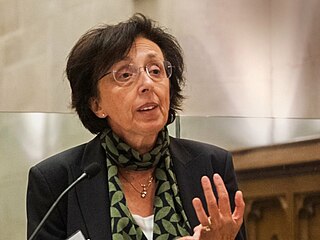
Giulia Galli is a condensed-matter physicist. She is the Liew Family Professor of Electronic Structure and Simulations in the Pritzker School of Molecular Engineering and the department of chemistry at the University of Chicago and senior scientist at Argonne National Laboratory. She is also the director of the Midwest Integrated Center for Computational Materials. She is recognized for her contributions to the fields of computational condensed-matter, materials science, and nanoscience, most notably first principles simulations of materials and liquids, in particular materials for energy, properties of water, and excited state phenomena.

Zlatko Boško Tešanović was an Yugoslav-American theoretical condensed-matter physicist, whose work focused mainly on the high-temperature superconductors (HTS) and related materials.












